Adria Airways - not only the carrier
Adria Airways is most known as the airline of Slovenia. The majority of its business is connected with scheduled flights. But Adria is also related with other parts of aviation industry. Let's try to make a quick review.
Adria's People
As an employer Adria has always placed great faith and reliance in the staff they employ, it was guiding principle from the very beginning as was a policy decision taken at the very start of operations that all personnel, technical staff, cabin crew and passenger services staff would be trained at the Brnik centre as well as air crew in a dedicated flight training school.
Yugoslavia had a very well organised popular flying association network and many larger towns had fixed wing or gliding centres. Even today the legacy of this policy is to be found with many UTVA 75 aircraft still owned and maintained by flying associations. During early operations some 70% of Adria pilots came from the flying associations, the remainder coming after a military career. New students would undergo a medical in Belgrade before attending ground school in Ljubljana. By the end of the first year most would be flying to PPL standard, however with compulsory national service those with flying experience would likely as not find themselves posted to Zadar (now in Croatia) and would spend half their second year learning theory and the other half flying UTVA 66 and SOKO J-20 Kraguj aircraft in training for the ground attack role. Upon return to civilian life a pilot in Inex Adria during the early 80’s could expect to return to DC9 ground school for a further eighteen months, complete multi-engine training on Morava and Seneca aircraft and progress to flying the DC9 in service. Simulator training was carried out in Belgrade although the simulator JAT provided was very basic and Adria regularly dry leased the Swiss Air DC9-51 simulator in Zurich. This arrangement continued when the Super 80’s arrived.
Today most of the pilots currently flying with Adria will have attained a degree from the aviation department at the University of Ljubljana (Mechanical Engineering Faculty). Students will arrive at Adria with a Frozen ATPL (Theory) and a CPL. Adria will take them though the multi-engined IFR ratings and MCC (Multi Crew Co-operation) course and a pilot is subsequently assigned to CRJ or Airbus, according to the needs of the airline at the time. On average an Adria pilot would expect to achieve command after five to seven years.
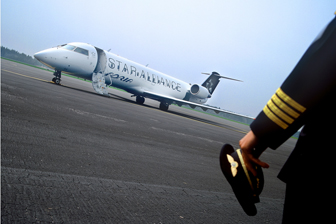
|
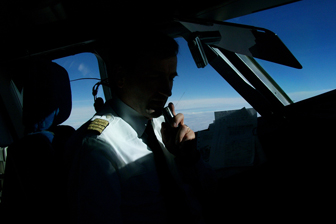
|

|
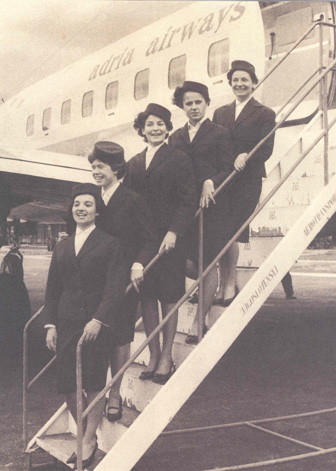
|
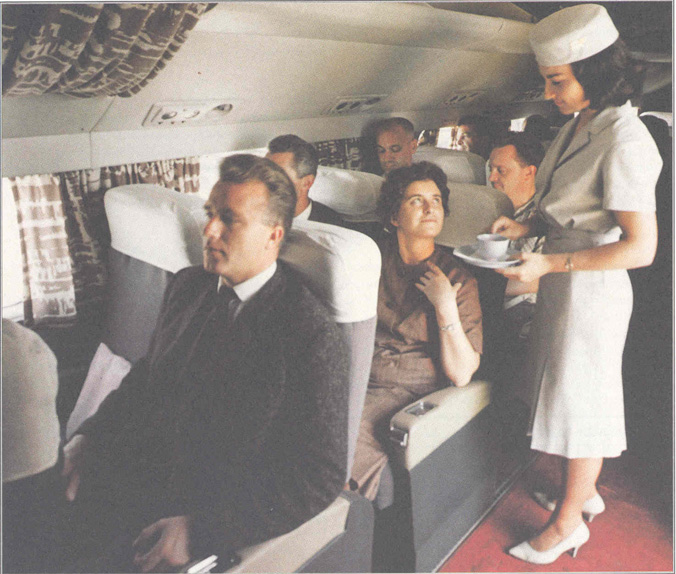
|
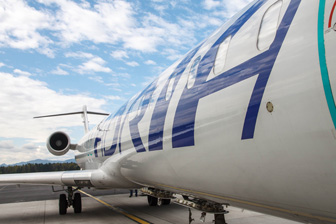
|
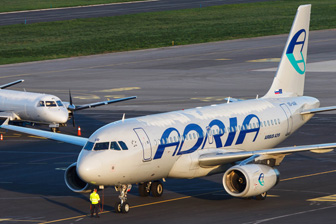
|
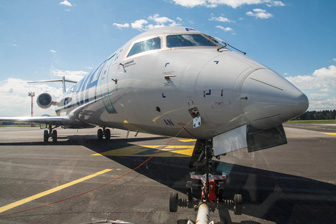
|
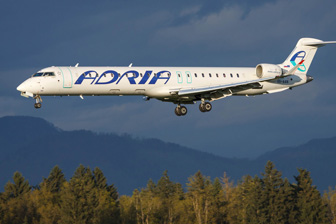
|
Adria Flight Career Center
The Adria Airways Flight School was founded in 1980, in cooperation with the Faculty of Mechanical Engineering in Ljubljana. The original purpose of the school was the training of pilots is small aircraft to obtain the professional IFR (Instrumental Flight Rules) licence. Today the majority of candidates trained by AFCC are now active pilots in Adria Airways and other recognized airlines, like Lufthansa, Turkish Airlines, Emirates, Quatar Airways, KoreanAir, RyanAir, WizzAir. FCC fleet consists of:
3x PS-28 Cruiser
1x Cessna 172SP - Glass cockpit
1x Piper Turbo Arrow
1x Diamond DA-42 Twin Star
1x Mechtrronix FNPT II/MCC Flight Simulator
1x Piper Warrior III
Adria FCC offers training programmes for all kinds of pilots, from private pilots of light sport aircraft to professional pilots with licences at the highest level.
Panoramic flights
Adria gives an opportunity to See Ljubljana or Bled from the air, fly over the Julian Alps or choose your own destination in Slovenia or neighbouring countries and enjoy a bird’s eye view. Panoramic flights usually take place at an altitude of over 300 metres, in a single-engine propeller-driven aircraft with an average speed of around 220 km/h. Flights are for a single passenger (two-seater aircraft) or three passengers (four-seater aircraft).
As well as panoramic flights and simulator flights, you can try an adrenaline-boosting parachute jump from an aircraft and a panoramic helicopter flight.
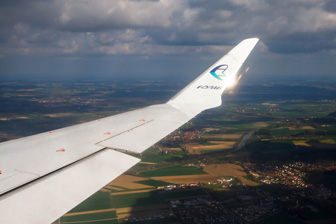
|
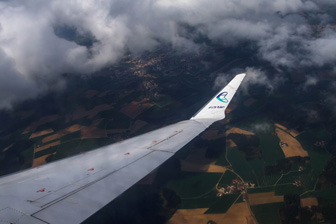
|
Aircraft Maintenance
At Adria Airways, every time an aircraft lands the maintenance personnel inspect it, service it and in the event of faults on individual systems, they follow the recommended procedures from the aircraft manufacturer. Our maintenance staff work in three shifts and are on hand 24 hours a day. At the home airport of Ljubljana, Adria Tehnika has three heated hangars containing all the necessary workshops and storage space.
The aircraft maintenance system, which defines in detail the methods and frequency of maintaining all systems on the aircraft, is set out by the aircraft manufacturer. There are several types of inspection:
• daily inspections
• weekly inspections
• A inspections
• general inspections.
In daily inspections, service crews perform a general visual inspection of the aircraft in order to detect possible physical damage to vital parts and, where necessary, top up aircraft fluids, check the state of emergency equipment and the passenger cabin, and check the tyre pressure. During the daily inspections they deal with all possible faults in the aircraft systems that would prevent it from flying out of the home airport the next day. The pilot, too, checks the functioning of all systems before each flight, especially the aerodynamic control surfaces. Special attention is also paid to the operation of the engines. With the help of the on-board computer and appropriate equipment on the ground, the technical ground crew constantly monitor the correct operation of the engines and wear trends, and determine when the engine needs to be removed from the aircraft, inspected and overhauled.
Each week, aircraft undergo more detailed inspections, where the service crews additionally inspect and check all systems: from the command systems to those for safety, such as all systems for extinguishing fires on the aircraft.
The first comprehensive periodic maintenance inspection, known as the A inspection, must be performed every 500 to 600 hours of flying, every 45 days on average. At this time service staff change the filters, and they inspect and test in minute detail all vital aircraft systems. Once a year they closely inspect the airframe (wings and fuselage), all systems and, of course, the engines. Given the equipment, training and experience Adria technical personnel can also perform highly demanding and comprehensive five-year aircraft inspections. At that time, in addition to checking the operation of all systems, a close inspection is performed of the aircraft structure in order to detect any possible damage, cracks or corrosion of the airframe. In this inspection we also pay close attention to the general cleanliness and anti-corrosion protection of the aircraft's structure, since this is the key to the long lifespan of the aircraft.
General aircraft inspections, which are due every 10 years, are performed at a major authorised service centre. At that time the entire aircraft is overhauled, which for the Airbus A320 lasts six weeks or 25,000 man-hours.
Owing to such thorough maintenance, as much as 99.5 per cent of Adria Airways flights are free from delays caused by malfunctions, which places us among the best in the world in terms of reliability.
For its high-quality aircraft maintenance and harmonisation of both the organisation and the entire system of aircraft maintenance with the recommendations and standards valid in the EU, Adria Airways received a European Union JAR 145 certificate. With this certificate we can also offer aircraft maintenance to other carriers. In 2004 Adria was one of the first 12 companies in the world to obtain the IOSA safety certificate.
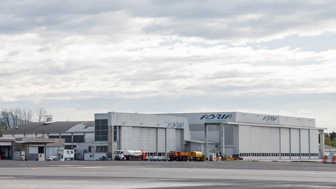
|
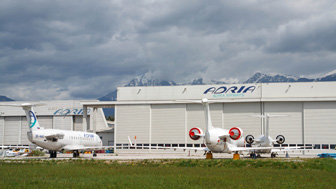
|
Adria Tehnika
Adria Tehnika was established in June of 2010 as a separate business entity. Since the beginning of the airline’s operations, Adria Airways has always performed its own maintenance. In 2002 Bombardier Aerospace selected Adria Airways for its first Heavy Maintenance Facility for Canadair Regional Jet aircraft because of its expertise and extensive experience. The volume of third party maintenance activities has since outgrown the volume of services performed for their own fleet. Today, Adria Airways Tehnika is approved to perform line and base maintenance on Bombardier CRJ100/200/700/900/1000 aircraft as well as the Airbus A319/320/321 fleet. Bombardier Aerospace has awarded Adria Airways its Annual Airline Reliability Performance Award for 2007 and 2008.
Between 2002 and 2013 Adria Tehnika performed maintenance work on more than 900 CRJ 100/200/700/900/1000 and Airbus 319/320/321 aircrafts.
